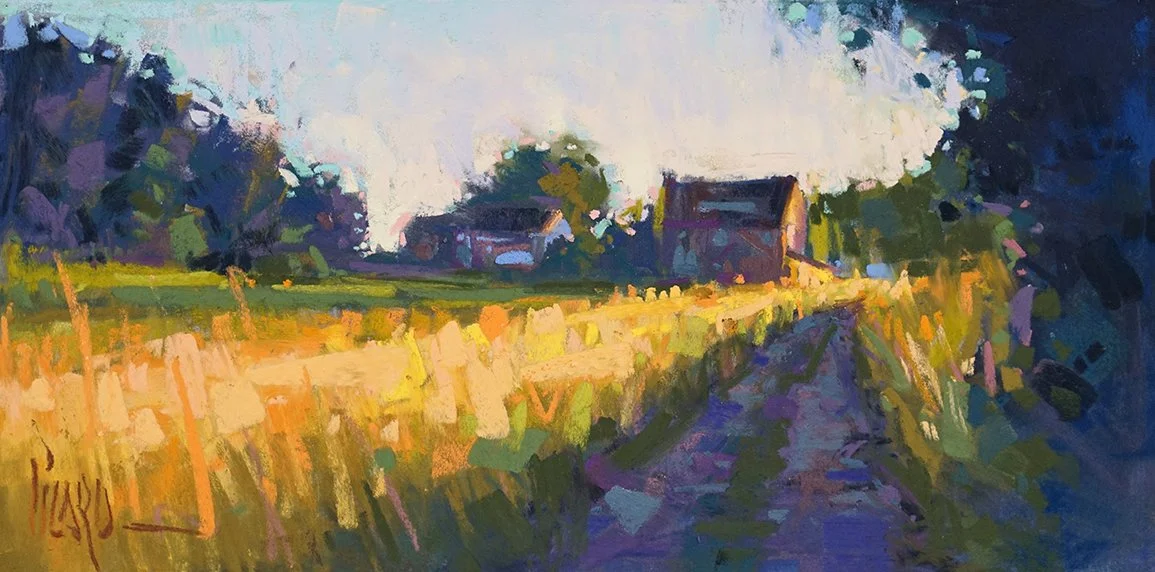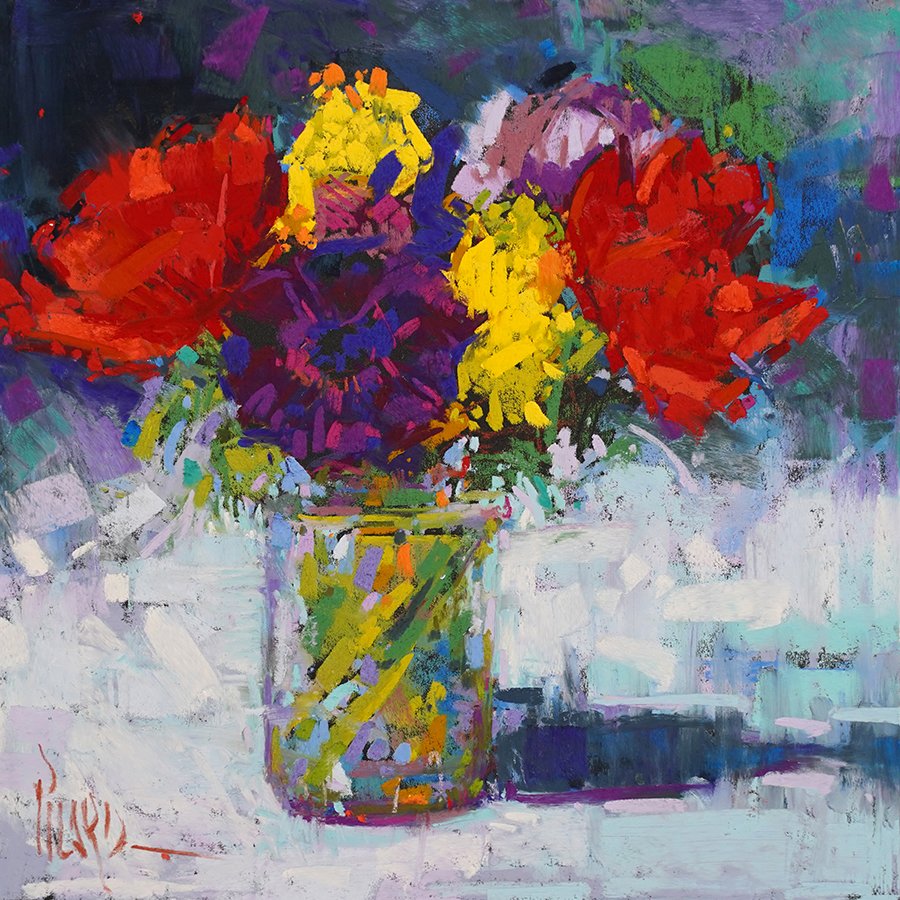An autumn romance sparked in my studio
There's something about October light that stirs the creative spirit. Farm stands overflow with gourds in every shape and size, orchard branches hang heavy with fruit, foliage painted in golds and reds. For pastel artists, autumn is filled with gifts, like complementary colors appearing naturally or the way light falls beautifully upon a simple pumpkin.
But here's what I've learned: the magic isn't in finding the perfect pumpkin. It's in discovering the relationships between the forms.
Noble Gourd, 9x9” pastel on Pastelgrain
The One I Almost Overlooked
I almost painted it alone.
The dark mysterious gourd—gorgeous, with deep shadows and a signature green streak—was clearly the star of this harvest show. Dramatic and confident. But something felt incomplete.
So I reached for the quiet one. A small, pale pumpkin I'd almost overlooked at the farm stand. Unassuming. The color of morning fog.
That's when a harvest romance was born.
That white pumpkin wasn't there to support its more important accomplice—it was there to make you feel it differently. Suddenly, reds felt richer, the green more alive. Shadows gained a depth that I couldn't have painted in isolation.
It's a timeless story; how we become more ourselves in the presence of another.
Harvest Romance, 9x12” Pastel on UART
Start Your Own Harvest Story
Here's an approach to still life storytelling that has served me well:
Start with one. A single pumpkin, gourd, or apple. One light source. Observe how light reveals its character. Notice the shadow patterns. There's magic in simplicity.
Then invite another. Add something that contrasts in size, color, or texture. Watch how the two begin talking to each other. A smooth apple beside a copper kettle. A rough gourd supporting a pale pumpkin. Unlikely accomplices making shadows shift as new relationships form.
Finally, add a third character. It could be a texture, some autumn leaves, a vessel, or another piece of harvest bounty. Now you have rhythm, conversation, and a story unfolds. But here's the secret: you're not painting everything. You're discovering which elements belong together.
Visit your local farm stand or orchard. Be playful and stay curious. Try different combinations. Use simple backgrounds so your subjects can shine. And remember: the best discoveries often come from the characters we almost overlooked.
Who knows? Maybe your own autumn romance will spark in the process.
Confidants, 10x10” pastel on UART
Your Autumn Invitation
Autumn doesn't rush. Neither should we.
This season is generous with gifts for artists. Whether you’re feeling led to paint, sketch, photograph the beautiful foliage, or simply arrange beauty on your kitchen table—the harvest invites us all to slow down and notice relationships.
Bring autumn home. Set up a still life with a single light. Start with one beautiful thing, then see who it wants to meet. The conversations might surprise you.
Keep Painting,
Alain
Looking for some pumpkin pairing fun to get you in the mood? Watch this FREE demonstration HERE!





































